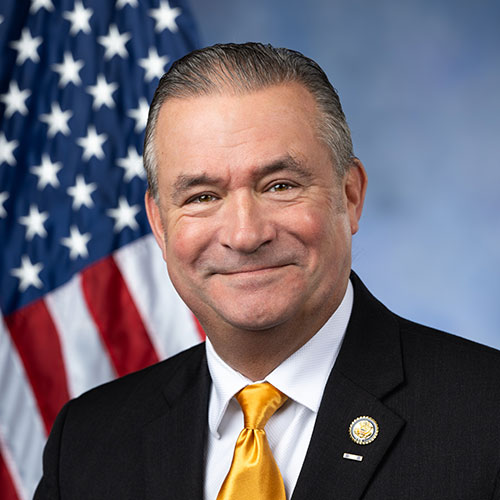Press Releases
2019 Flood Emergency Management Resources*
Omaha, NE,
March 18, 2019
*As of 8/7/19. Please note these are official resources and there are many other non-profits who are assisting. FEMA DISASTER UPDATE SBA:
Community Engagement and Outreach:
National Flood Insurance Program:
FEMA Public Assistance Program:
The Major Disaster Declaration for the State of Nebraska (FEMA-4420-DR-NE) has been amended; to include Boone, Buffalo, Butler, Cass, Colfax, Custer, Dodge, Douglas, Knox, Nemaha, Richardson, Sarpy, and Washington Counties for Public Assistance [Categories C-G] (already designated for Individual Assistance and assistance for debris removal and emergency protective measures [Categories A and B], including direct federal assistance, under the Public Assistance program). Adams, Antelope, Blaine, Box Butte, Boyd, Burt, Cedar, Cuming, Dakota, Dixon, Fillmore, Frontier, Furnas, Gage, Garfield, Gosper, Greeley, Hall, Holt, Howard, Jefferson, Johnson, Lancaster, Logan, Loup, Madison, Morrill, Nance, Otoe, Pawnee, Pierce, Platte, Saline, Sherman, Valley, Wayne, and Wheeler Counties for Public Assistance [Categories C-G] (already designated for debris removal and emergency protective measures [Categories A and B], including direct federal assistance, under the Public assistance program. Disaster Recovery Centers: · Sarpy County: 3802 Raynor Parkway, Suite 201, Bellevue, NE 68123. Hours are 7 a.m. to 7 p.m. daily. · Douglas County: 111 East Front St., Valley, NE 68064. Hours are 7 a.m. to 7 p.m. daily. Individuals & Households Program (IHP)Federal funding is available to eligible individuals in Boone, Buffalo, Butler, Cass, Colfax, Custer, Dodge, Douglas, Knox, Nemaha, Richardson, Sarpy, Saunders, Thurston and Washington counties and the Santee Sioux Nation. Additional counties may be designated as damage assessments are completed. As of April 5: · 3,838 applicants in designated counties have applied for FEMA IndividualAssistance. · FEMA has approved $12,427,992 for Nebraska individuals and households. · $11,364,176 is for housing assistance and $1,063,816 for disaster-caused other needs. FEMA Teams Going Door to DoorFEMA Disaster Survivor Assistance Teams are working in impacted neighborhoods to help survivors register for assistance and to identify immediate and emerging needs. Teams are operating in all 15 counties designated for Individual Assistance. They have visited more than 4,988 homes. National Flood Insurance Program (NFIP) To date, NFIP has received 991 flood insurance claims in Nebraska and issued $3,884,510 in advance payments to policyholders. Total paid to date is $5,327,757. Disaster Unemployment Assistance (DUA) AvailableIndividuals can generally receive up to 26 weeks of DUA benefits as long as unemployment continues to be a result of the disaster. Eligibility for DUA benefits will be determined on a week-to-week basis. The application deadline is April 26, 2019. General information about DUA can be found at dol.nebraska.gov/UIBenefits/Programs/DUA. Tax Relief for Nebraska SurvivorsIndividuals who reside or have a business in counties designated for FEMA Individual Assistance may qualify for federal tax relief. This may include additional time to file yearly individual tax returns or quarterly payments. Eligible taxpayers will also have until July 31, 2019, to make 2018 IRA contributions NEMA: The Nebraska Emergency Management Agency (NEMA) and the Federal Emergency Management Agency (FEMA) remind residents planning to rebuild to consult with their local floodplain manager first to see if required permits may be necessary before work can start. Once the home has been inspected, residents are safe to enter. However, it is the owner’s responsibility to make sure all necessary permits have been obtained – including, if necessary, a Floodplain Development Permit, before starting reconstruction. To find floodplain management contacts, visit dnr.nebraska.gov/floodplain and click on your county. Final Note: First "Match" Level Reached Board Update:
SBA: Director Tanya N. Garfield of the U.S. Small Business Administration’s Disaster Field Operations Center-West today reminded Nebraska small businesses of the May 7, 2019, deadline to apply for an SBA federal disaster loan for economic injury caused by severe storms and flooding in Thurston County that occurred June 25-30, 2018. UNMC: https://www.dropbox.com/sh/8y2pa65is189dbi/AACKN4rjZyASwloUw5fSyXgFa?dl=0 Video 1 – From an infectious disease standpoint, what are the concerns of people going back into their homes? When folks are finally able to get back into their neighborhoods and their homes, there’s a number of concerns they need to be thinking about. First of all, you have the immediate hazard of electrocution and some chemical hazards from industry plants or maybe somebody stashed chemicals in their garage. But from the infectious disease side of things, those floodwaters are really a witches brew of different kinds of infectious agents. They’re contaminated with sewage, human as well as animal sewage, as well as a lot of organic material. Video 2 – There a number of people in shelters, what precautions should they take to avoid being sick? Often times people…they’re rescued from the flood waters and they’re under great stress and they finally get to a shelter and they think, ‘Oh, I’m saved.’ Unfortunately, there are some infectious problems that also go into the shelters with them. The people who run the shelters are trying to do a great job, but people are living in crowded conditions, with less hygiene than they normally might have. Diarrheal illness and respiratory tract illness can spread pretty rapidly in those settings. So the folks who set up shelters need to try to spatially separate people as much as possible. |
